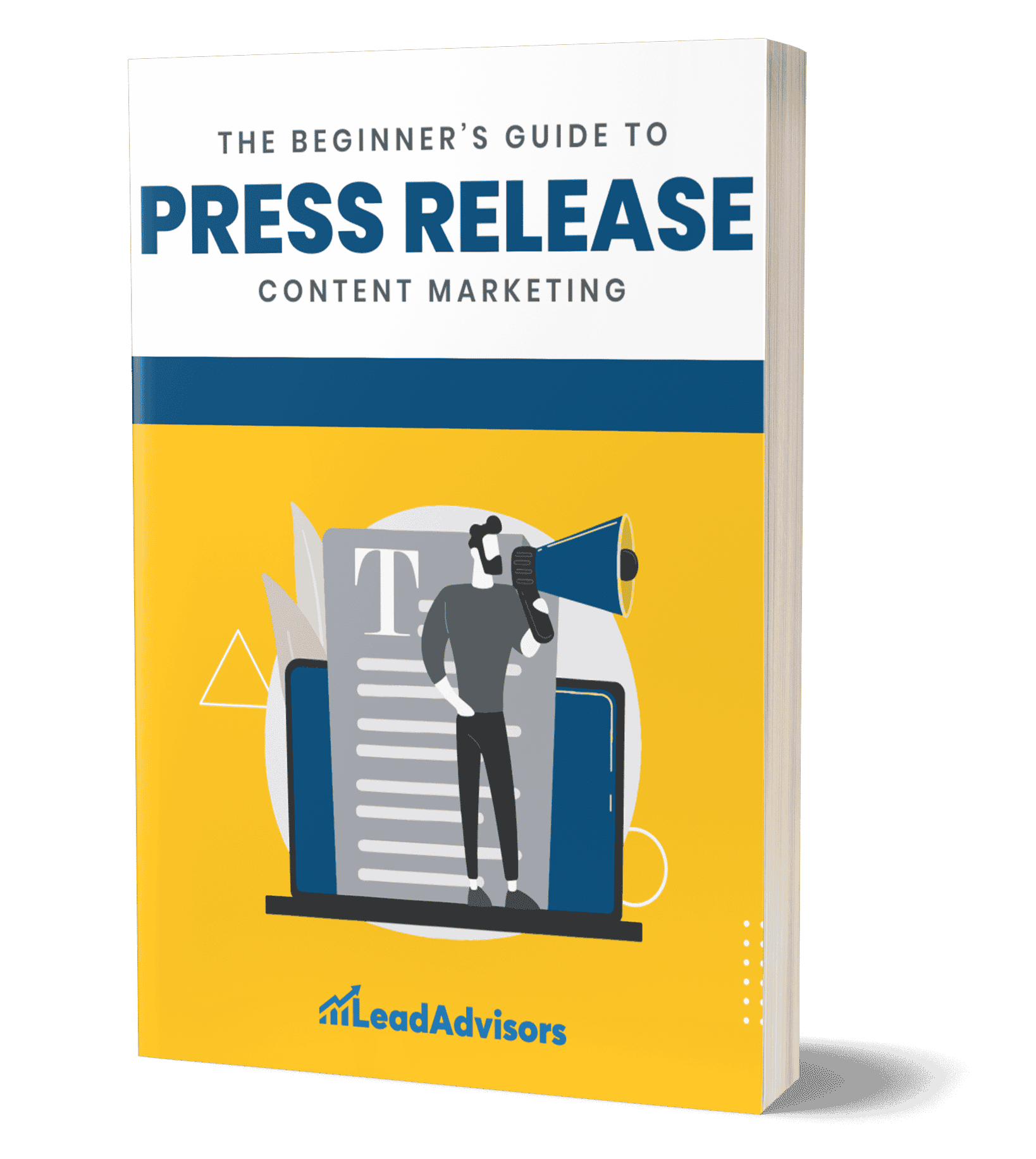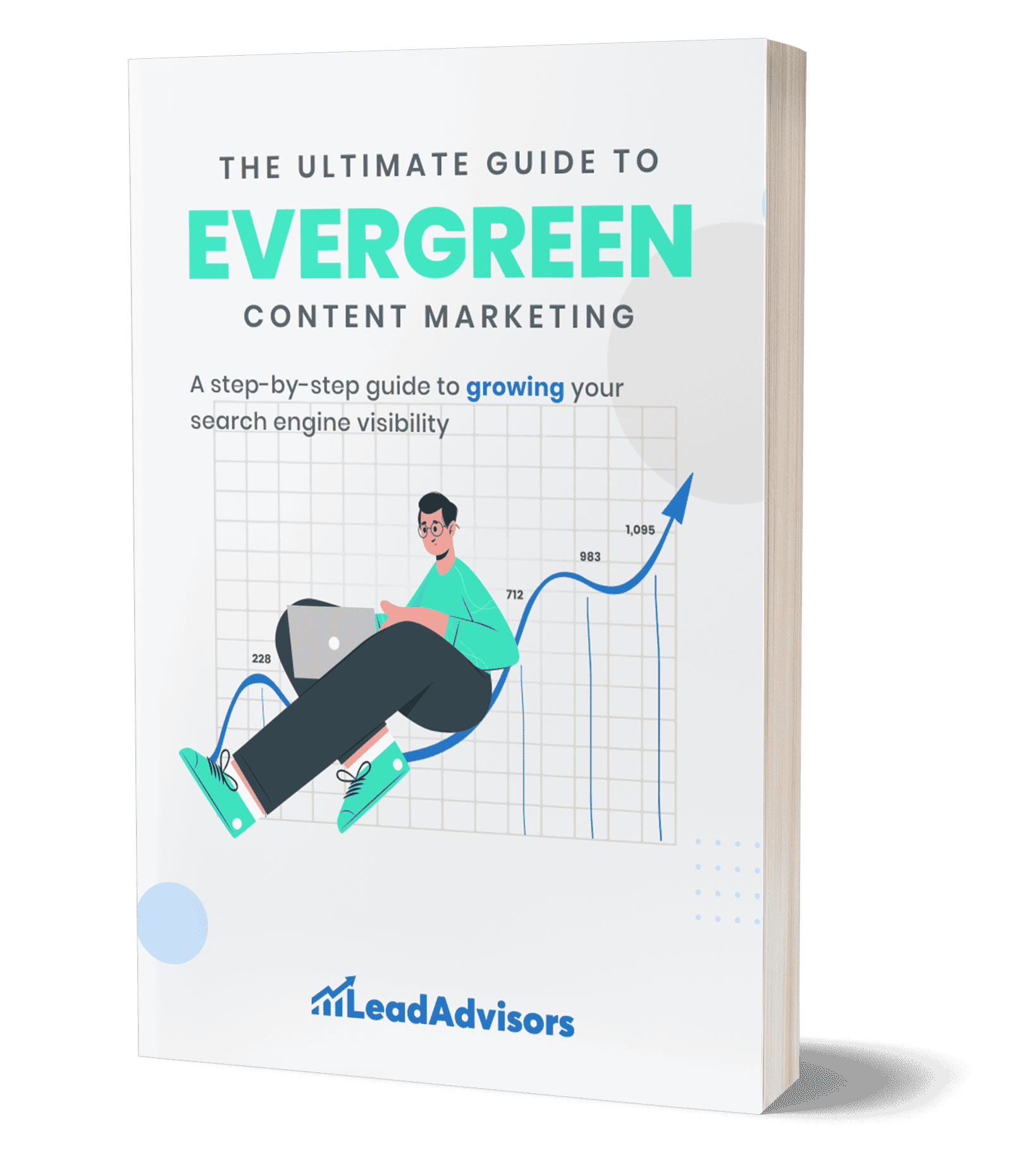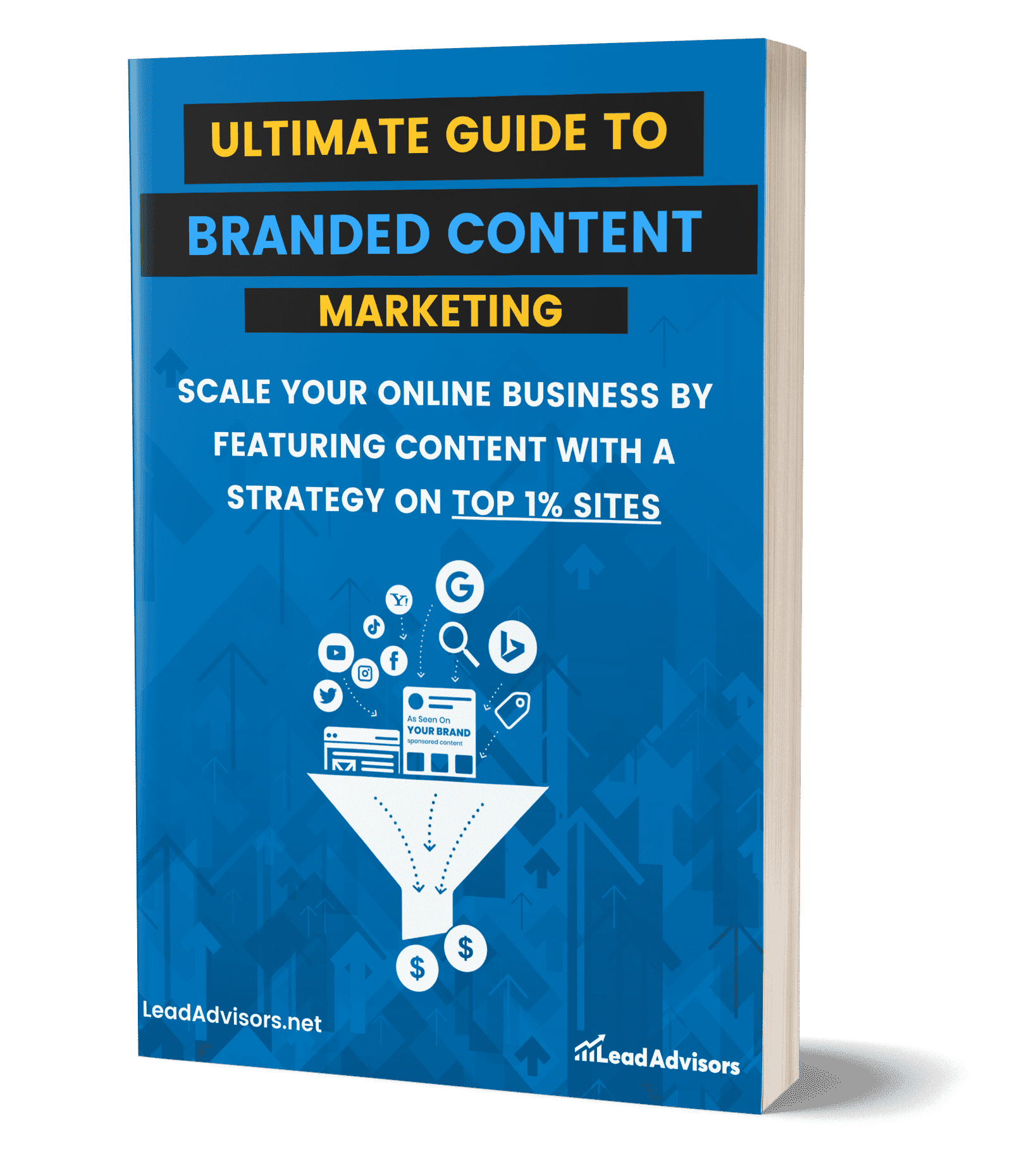As a business owner or marketer, one of your top priorities is to generate leads and increase conversions. However, this can be a challenging task, especially when you’re relying solely on your own website to attract visitors. Fortunately, there is a powerful strategy that can help you reach a wider audience and generate more leads: guest blogging.
Guest blogging can be an effective way to build brand awareness, drive traffic to your website, and ultimately, increase conversions. However, writing guest posts that actually convert can be a tricky process. It requires a deep understanding of your target audience, as well as a strategic approach to crafting your content.
In this guide, we’ll share tips and strategies for writing guest blog posts that not only get published but also generate leads and conversions. We’ll cover everything from identifying the right blogs to target, to crafting compelling headlines and CTAs, to measuring your ROI. Whether you’re new to guest blogging or looking to improve your current approach, this guide has everything you need to succeed.
Guest Blogging and Lead Generation Connection
Guest blogging is a content marketing strategy where you write and publish blog posts on other websites or blogs as a guest author. This strategy can help you expand your reach, increase brand awareness, and build relationships with industry influencers and potential customers.
Lead generation, on the other hand, is the process of identifying and attracting potential customers for your business. It involves creating content and strategies that prompt people to share their contact information with you, such as their name, email address, or phone number, so that you can nurture them into paying customers.
Guest blogging and lead generation work hand in hand because guest blogging can be an effective way to generate leads. By creating high-quality content on other websites, you can attract a new audience and offer them valuable information in exchange for their contact information.
This way, you can turn website visitors into leads and eventually into paying customers. Additionally, guest blogging on websites with a high domain authority can also help improve your search engine ranking, leading to increased visibility and more potential leads.
Finding the best publications for your guest posts

Guest blogs let you generate leads with the help of other websites. You can’t just post on just any website, though.
Some of the most recommended publications for guest posts are Linkedin Pulse and The Huffington Post. However, you should look for publications that are suitable for your brand.
Make sure your articles match the site’s subject matter. For instance, finance websites may only accept finance articles. Read their existing guest posts to learn their preferred writing style.
Then, check their guidelines for guest bloggers. Learn what requirements you need to submit as an aspiring guest writer. You should also check their contact information to learn more.
Once they accept you, make sure to follow their format. Write similar to the other guest posts, and always link to your sources.
Benefits of Guest Blogging and Lead Generation

The benefits of guest blogging posting are many. It can help you grow an email list, increase the number of people who share your content on social media, and create lead generation for your business without being seen as spammy.
Guest posts create leads for your business, albeit at a slow pace. However, it’s an indispensable part of inbound marketing strategies.
- Blogs build trust in your audience – Guest blogs for lead generation strategy should inform and engage readers. As more people read your articles, they soon trust your content. Eventually, this builds your brand authority.
- Guest posts increase sales revenue – Data from different companies and businesses suggest that guest blogs increased their earnings and a possible lead. Your results may vary, though, so you should craft and publish content carefully.
- Guest blogs improve email marketing – Building your prospect email list can be difficult. Guest posts can help you gather more email addresses in the long run.
As we’ve mentioned, writing a blog post is only one part of an effective campaign. Online articles can create leads for your business in the long term, along with your faster strategies.
Steps on How to Write Guest Blogs that Generate Leads

Guest blogging is a powerful strategy that can help drive traffic to your website and generate leads for your business. But, in order for your guest blogs to be effective, they must be well-written and strategically crafted to attract and engage your target audience.
Here are the outline of the steps you can take to write guest blogs that generate leads and drive real results for your business.
Research Your Target Demographic

Similar to your business, your online articles should cater to a target audience, then making it easier to have ways to generate leads. It’s the first step in writing blogs that effectively generate leads.
One of the best practices to understand your ideal customers is by creating a customer avatar. It’s a fictional character that embodies the characteristics of your potential customers, such as:
- Biographical information – These are essential details like their name, age, gender, location, income, job, etc. It’s important to know what demographic your leads are.
- Principles and values – Understand the ideals they uphold. These also include their aspirations, leads, and goals in life.
- Pain points – Everyone has lingering problems that keep them awake at night. Your blog post may offer the solution they need.
- Favorite sources of entertainment and information – Check their preferred page or websites and media. If they prefer specific news sources, those could give insights into their behavior.
- Their role in buying stuff – Adult customers can pay for a type of product or service independently. In contrast, children have to ask permission from adults. This is important for understanding where leads come from.
- Objections to your product – Check the new leads and factors that prevent them from buying what your business offers.
Customer Research Tools
You can check other sources to understand your target demographic further with leads. Fortunately, most of them are accessible for free.
You may start by checking the US Census Bureau if you’re making a name for yourself in the United States. If you’re from another country, check your nation’s census bureau.
What’s more, you can check Facebook Audience Insights to learn about your current customers. The social media platform helps businesses generate leads with this tools.
Choose the Right Platform for Guest Blogging

Guest blogging is a fantastic way to reach a wider audience and generate leads for your business. However, finding the right platform to share your content is essential to ensure your efforts pay off. So, how do you choose the right platform for guest blogging?
Firstly, you need to research high-traffic sites with a large audience. The higher the traffic, the more people will see your content and potentially convert into leads. Look for websites that have a significant following and engagement.
Secondly, analyze the site’s readership and engagement metrics. Look at how often the site is updated, how many people comment on posts, and how many social shares the content receives. These metrics will give you an idea of how engaged the audience is and whether they are likely to interact with your content.
Lastly, consider the relevance and authority of the site in your industry. Look for websites that are related to your niche, and their audience is likely to be interested in your content. Check their domain authority to ensure that they have a good reputation in the industry.
Furthermore, here some of the popular and effective platforms that can help you in your guest blogging agenda.
- Lead Advisors– Lead Advisors appears to be a company that offers consulting services and guidance to help businesses generate leads and grow their customer base. They offer services such as lead generation, marketing automation, and sales enablement to help businesses increase their revenue and achieve their growth goals.
- Forbes: Forbes is a well-known business publication that covers topics related to finance, investing, and entrepreneurship. They have a contributor program that allows guest writers to publish their content on their website and reach their audience.
- Huffington Post: The Huffington Post is a news and opinion website that covers a wide range of topics, including politics, entertainment, and lifestyle. It has a contributor program that enables guest writers to share their content and reach a vast audience.
- Hubspot: Hubspot is a marketing and sales platform that provides a wealth of resources for marketers and business owners. They have a guest blogging program that allows writers to contribute their content and reach a targeted audience.
- Entrepreneur: Entrepreneur is a popular magazine and website that covers business news, trends, and advice for entrepreneurs. They have a guest blogging program that enables writers to share their insights and reach a broad audience of business owners and executives.
- Business Insider: Business Insider is a financial and business news website that provides insights and analysis on the latest business trends and developments. They have a contributor program that allows guest writers to share their content with their audience.
- Inc.: Inc. is a business magazine and website that covers topics related to entrepreneurship, startups, and small businesses. They have a guest blogging program that enables writers to share their expertise and reach their audience.
- Mashable: Mashable is a news and entertainment website that covers a range of topics, including technology, social media, and culture. They have a contributor program that allows guest writers to share their content and reach a large audience.
- Fast Company: Fast Company is a business magazine and website that covers topics related to innovation, technology, and creativity. They have a guest blogging program that allows writers to share their insights and reach a targeted audience.
- Social Media Today: Social Media Today is a website that covers topics related to social media marketing, content marketing, and digital strategy. They have a contributor program that allows guest writers to share their expertise and reach a targeted audience of marketers and business owners.
By choosing the right platform for guest blogging, you can increase the visibility of your content and reach a wider audience, leading to more leads and potential customers.
Crafting Your Guest Blog Post

As a guest blogger, you have the opportunity to share your expertise, grow your brand, and connect with a new audience. But how can you ensure that your guest post stands out among the sea of content online?
One key factor is crafting a high-quality post that engages readers and provides value. Here are soe of the essential elements of crafting a guest blog post that generates leads and boosts your content marketing ROI. So let’s dive in!
1. The Headline
First and foremost, your headline should be attention-grabbing and relevant to your target audience. It’s the first thing that readers see, and it can make or break the success of your post. Your headline should clearly and succinctly describe the content of your post, while also being creative enough to stand out in a crowded online space.
2. Introduction
Your introduction should also be compelling and engaging, as it’s the next crucial element in hooking your readers. Start with a hook that sparks interest or poses a thought-provoking question, and then proceed to introduce the main topic of your post. You can Lead Advisor’s technique in creating introduction– PAS Framework.
It is a copywriting formula that stands for Problem-Agitate-Solution. It is a useful guide for creating persuasive and compelling content that addresses the reader’s pain points, highlights the impact of the problem, and offers a solution. The PAS framework can be applied to various forms of content, including guest blog posts, sales pages, email marketing, and more.
3. Body
The body of your post should provide value and depth to the reader with unique insights and actionable tips. You want your post to be informative, engaging, and worth the reader’s time. Consider using subheadings to break up the text and make it easier to read.
4. Images
Incorporating visual aids such as images, infographics, and videos can help make your post more engaging and visually appealing. These aids can help convey complex ideas more clearly, and keep readers interested in your content.
5. Backlinks
Another important element is the inclusion of relevant internal and external links. Internal links can help guide readers to other relevant content on your website, while external links can lend credibility to your post and provide readers with additional resources to explore.
6. Conclusion
Finally, your conclusion should be clear and concise, and encourage readers to take action. It’s an opportunity to summarize the main points of your post and leave readers with a clear takeaway or call-to-action.
By incorporating these elements into your guest blog post, you can create a post that not only provides value to your readers but also generates leads for your business.
You may also like: Free Templates: Brand Reviews vs. Product Reviews
Optimizing Your Guest Post for Lead Generation

When it comes to guest blogging, generating leads is often one of the main goals. After all, the effort put into writing a great guest post should result in increased traffic, higher engagement, and ultimately, more leads. To optimize your guest post for lead generation, there are a few key things to keep in mind.
You may start by performing keyword research. Try searching for the type of product or service your brand offers. Typically, you’ll find the most used keywords you need at the bottom. This can lead you in the right directi on.
What’s more, you may check Google Trends for trending keywords. It lets you check popular keywords in various countries and compare the ones you’ve found.
Next, include a strong call-to-action (CTA) in your post. The CTA should be clear and specific, telling the reader exactly what you want them to do next. Whether it’s to sign up for a newsletter, download a guide, or contact you for more information, make sure the CTA is relevant to the post and provides value to the reader.
Next, strategically place the CTA within the post. The best placement will depend on the length and structure of your post, but a good rule of thumb is to include it towards the end of the post or in a prominent location such as a header or sidebar.
Another effective strategy is to offer a relevant lead magnet or content upgrade in exchange for the reader’s contact information. This could be a free eBook, a template, a checklist, or any other valuable resource that relates to the topic of your post. Make sure the offer is compelling and provides real value to the reader.
Finally, ensure that the landing page where the reader is directed is optimized for lead conversion. This means keeping the page focused on the offer, keeping the design clean and simple, and minimizing distractions. By following these tips, you can maximize the lead generation potential of your guest post and achieve your content marketing goals.
Furthermore, you should check your progress on Google Analytics. It’s a free service that lets you track lead generation metrics such as conversion rate.
However, you’ll need paid services to check your competitors. Use tools like SEMRush to learn the keywords they’re using, so you could further improve your SEO.
Benefits of Optimizing your Guest Post for Lead Generation

Furthermore, Optimizing your guest post for lead generation can have numerous benefits for your business. By incorporating effective lead generation strategies into your guest post, you can increase your chances of converting readers into potential customers. Here are some of the benefits of optimizing your guest post for lead generation:
- Higher conversion rates: By placing a strong call-to-action (CTA) in your guest post, you can encourage readers to take a specific action, such as signing up for your email list or downloading a free resource. This can lead to higher conversion rates and ultimately increase your customer base.
- Improved brand awareness: Guest posting on high-traffic sites can help increase your brand’s exposure to a wider audience. By optimizing your guest post for lead generation, you can further amplify your brand awareness and increase your chances of attracting potential customers.
- More qualified leads: By offering a relevant lead magnet or content upgrade, you can attract leads that are genuinely interested in your business and what you have to offer. These leads are more likely to convert into paying customers, which can ultimately boost your revenue.
- Enhanced credibility: By providing value in your guest post with unique insights and actionable tips, you can position yourself as an expert in your industry. This can help build trust and credibility with your audience, making them more likely to take the desired action.
Overall, optimizing your guest post for lead generation can help you achieve your business goals and increase your ROI from content marketing efforts.
You may also read: 6 Ways to Generate Leads for Your Business
Measuring the Success of Your Guest Post

Congratulations on successfully publishing your guest post! But the work doesn’t end there. It’s important to measure the success of your guest post to determine its effectiveness and identify areas for improvement.
One way to measure the success of your guest post is by tracking key metrics such as website traffic, bounce rate, and conversion rate. Website traffic can indicate how many people are clicking through to your site from the guest post. Bounce rate, on the other hand, can show how engaged the visitors are with your content.
If they’re leaving after viewing only one page, you may need to revisit the quality and relevance of your post. Lastly, conversion rate measures how many visitors take the desired action, such as signing up for a newsletter or downloading a lead magnet.
Another way to gauge the success of your guest post is by monitoring social media shares and comments. If your post is getting a lot of shares and engagement on social media, it’s likely resonating with your target audience. Take note of the comments, too. They can give you insight into what people are finding valuable or lacking in your post.
Lastly, analyzing the number and quality of leads generated from the guest post is an essential part of measuring its success. Did the post attract a significant number of leads, and are they high-quality leads that are likely to convert into customers? If so, your guest post has likely succeeded in generating leads and should be considered a win.
Remember, measuring the success of your guest post is critical to optimizing your content marketing strategy and generating better results in the future.
Final Thoughts
Guest blogging helps you generate more leads in the long run. As your articles become a reliable source of information, your brand’s authority builds up, creates more traffic, and leads to your landing pages.
Most marketing campaigns use multiple methods. Content marketing is just part of your inbound marketing. You also need outbound marketing that typically uses cold emails.
Your lead generation efforts need other strategies, such as posting ads. Create profiles on social channels to get more referrals, a possible lead, and visitors to your landing page.
Also, you need marketing automation and online lead generation tools for an effective campaign. This includes CRM services, databases, and other B2B marketing solutions.
This will require extensive planning and an expert marketing team. The group members need time for lead scoring for MQLs and SQLs.
Most businesses don’t have time nor budget to spare for digital marketing. Fortunately, you could outsource to digital marketing agencies like LeadAdvisors.
From expertise to equipment, LeadAdvisors can generate more leads for you. Their teams can handle and lead your marketing while you concentrate on other aspects of your business.











